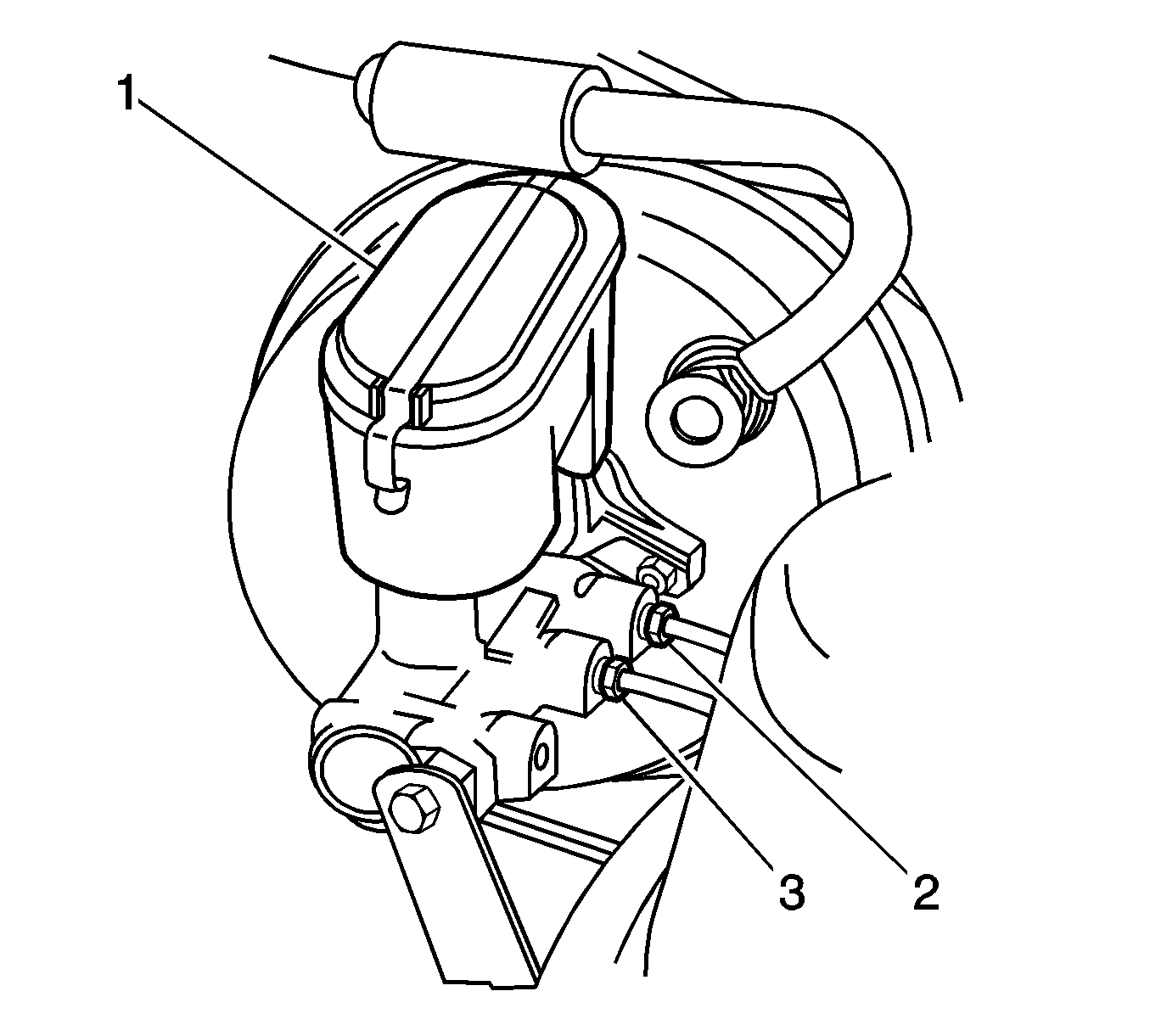- Clean the master cylinder reservoir cap (1) and the reservoir.
- Clean the master cylinder.
- Clean the brake pipes around the master cylinder.
- Place a container below the master cylinder in order to catch the brake fluid.
- Use a siphon in order to remove the brake fluid from the master cylinder reservoir.
- Remove the 2 brake pipes (2,3) from the master cylinder.
- Allow any residual brake fluid from the master cylinder to drain into the container.
- Fill the master cylinder reservoir with GM Vehicle Care® Brake and Clutch Fluid Super DOT-4, GM P/N 88958860, or the equivalent DOT-4 brake fluid. Allow the fluid to flow out of the reservoir until the fluid is free of air
- Install the 2 brake pipes to the master cylinder.
- Remove the 2 front calipers. Refer to Front Brake Caliper Replacement .
- Drain the brake fluid from the calipers into a container.
- Install the 2 front calipers. Refer to Front Brake Caliper Replacement .
- Remove the 2 rear calipers. Refer to Rear Brake Caliper Replacement .
- Drain the brake fluid from the calipers into a container.
- Install the 2 rear calipers. Refer to Rear Brake Caliper Replacement .
- Bleed the brake system. Refer to Hydraulic Brake System Bleeding .

Caution: Refer to Brake Fluid Irritant Caution in the Preface section.
Notice: Refer to Brake Fluid Effects on Paint and Electrical Components Notice in the Preface section.
Caution: Refer to DOT 4 Brake Fluid Caution in the Preface section.
Notice: When adding fluid to the brake fluid reservoir or to the clutch fluid reservoir, use only Super DOT-4 or equivalent DOT-4 brake fluid from a clean, sealed container. This polyglycol brake fluid is hygroscopic and absorbs moisture. Do not use fluid from an open container that may be contaminated with water. Improper or contaminated fluid could result in damage to the system components.
Important: Ensure the brake fluid level stays above half-full.
Notice: Refer to Fastener Notice in the Preface section.
Tighten
Tighten the 2 flare nuts to 14 N·m (10 lb ft).
